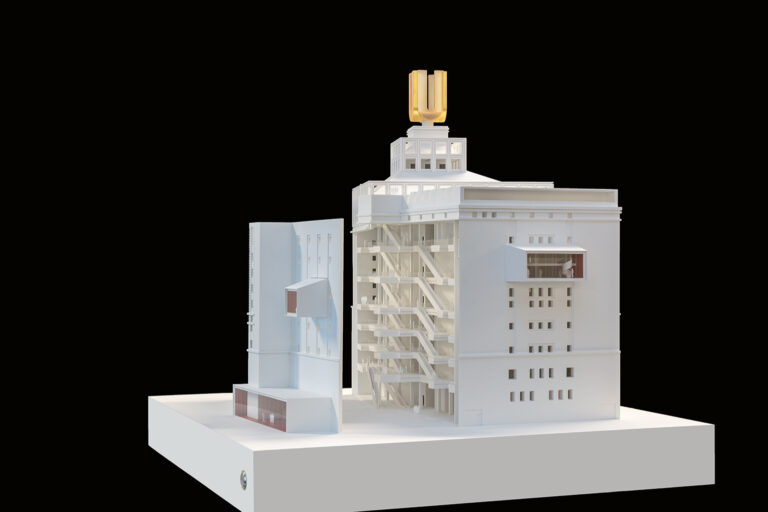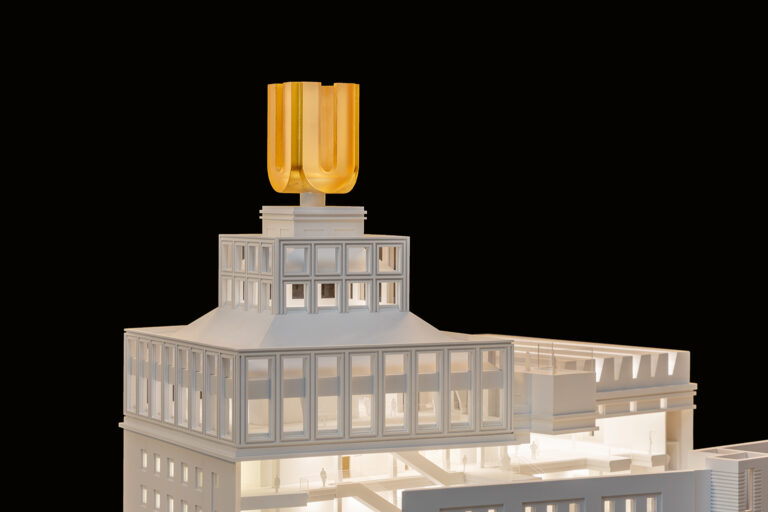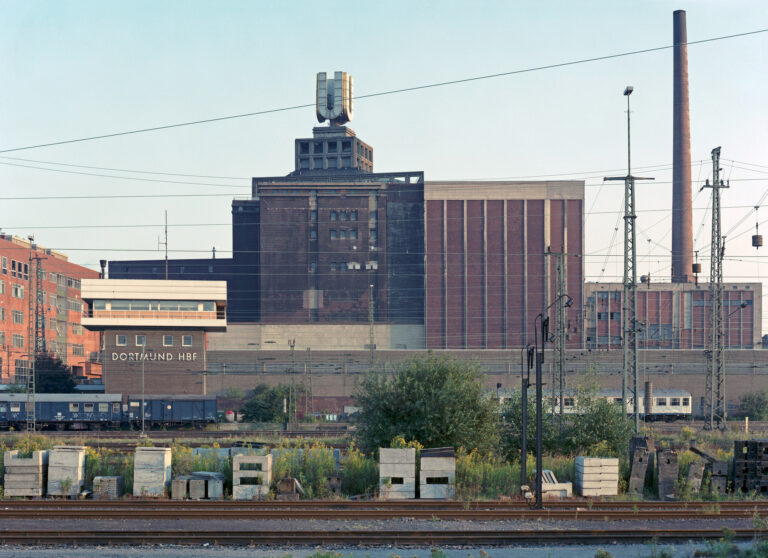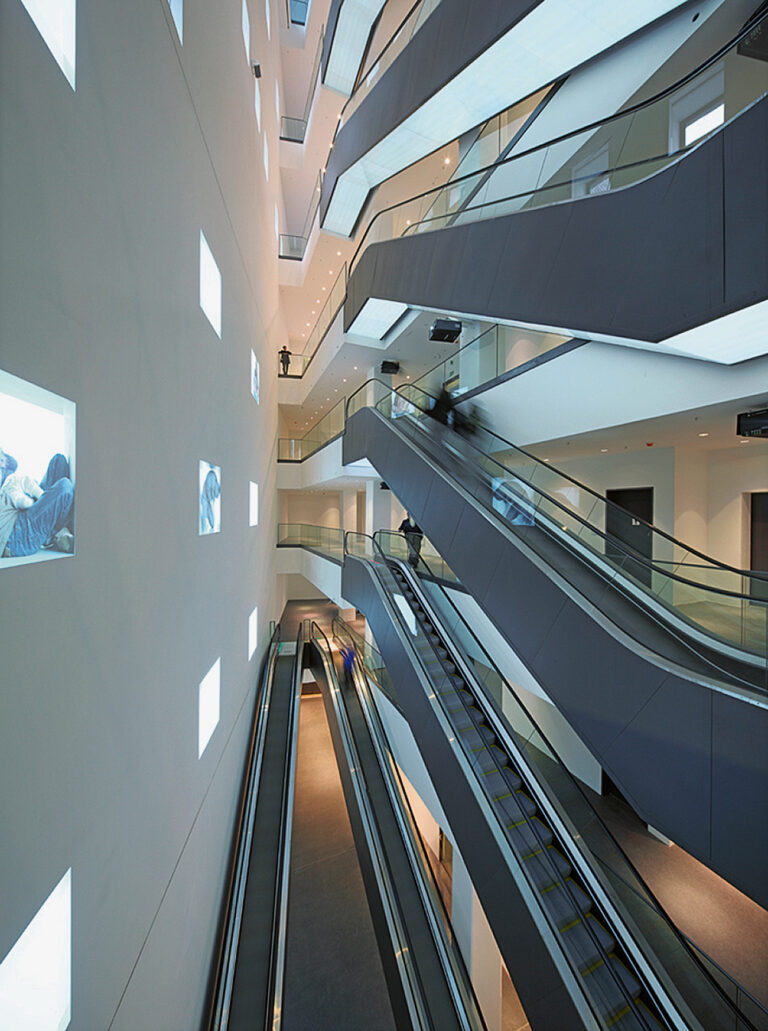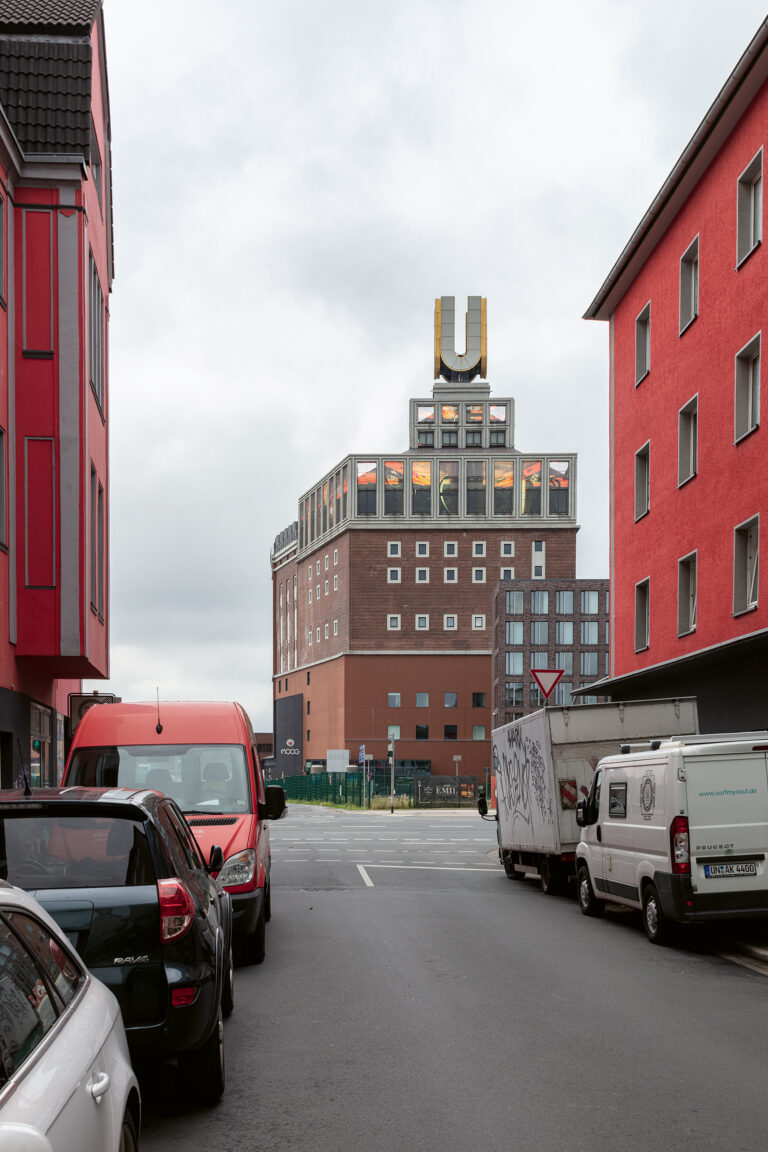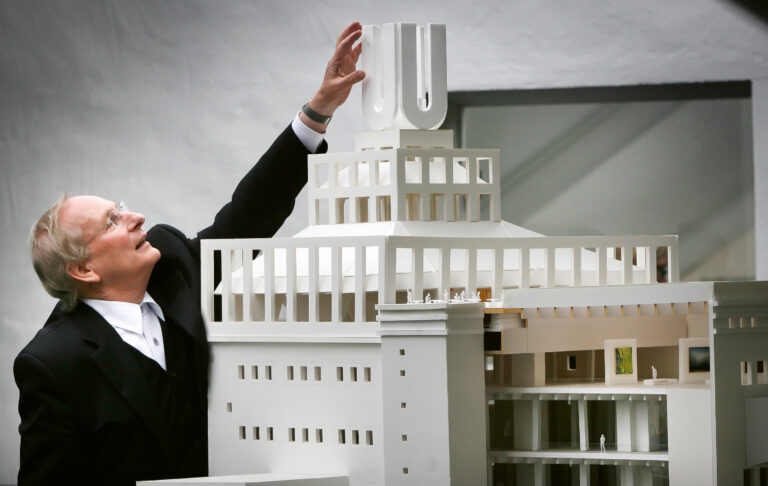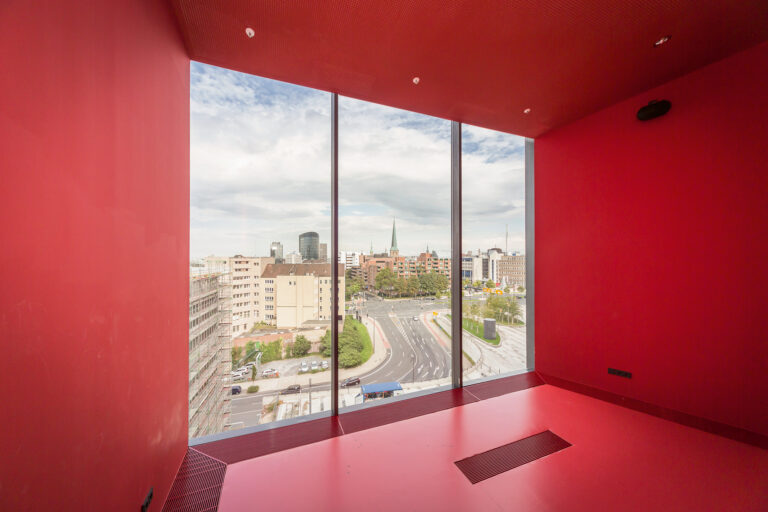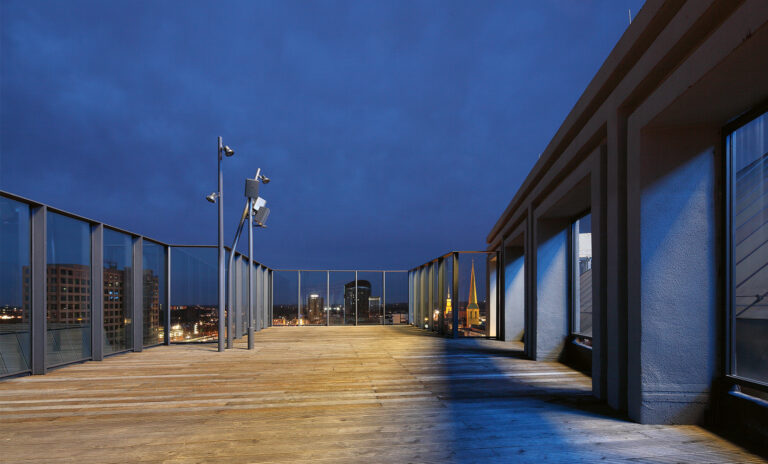Culture of repurposing
The transformation of the Dortmunder U
Niklas GliesmannToday, as a place of commemoration of industrial culture, the Dortmunder U (Dortmund U-Tower) is one of the landmarks in the eastern Ruhr region and can be seen from afar in the city of Dortmund. In the structural transformation of the early 1990s, the brewery site on Rheinische Strasse was abandoned and the demolition of the Union-Brauerei buildings made the vast site close to the city centre available again; a new urban development strategy was required. Of the old ensemble of factory buildings, only the fermentation and storage building, the U-Tower, erected by Emil Moog in 1926/1927 was preserved and listed due to its significance as Dortmund’s first high-rise building. The large golden U, which now gives the building its name, has been attached to it since 1968, and the city’s population still associates it with memories of the heyday of Dortmund’s brewing industry.
New objective
The decision was taken to transform the closed building, which had been used solely for processing and refrigerated storage, into an open space for the lively spectrum of culture and science in the digital age. At the same time, the new objective was to reconnect the Union quarter to the city centre and to upgrade the surrounding area. Awarded one of the second places in the competition (together with Gernot Schulz), the Dortmund-based Gerber Architekten started to transform the building, which, detached from its industrial past, had come to a standstill in 2007, opening it up and thus giving the listed building a new purpose and preservation. Thus, within two years, the building was resurrected as the largest exhibit in the complex of the “Dortmunder U – Centre for Art and Creativity” and opened in the year of the European Capital of Culture RUHR.2010.
Genius loci
According to Eckhard Gerber’s vision, the genius loci – i.e. the character of the site rooted in its history and its presence as a physical structure in the urban landscape – was to remain visible in the redevelopment. The link between the past and the future in the U-tower was therefore deliberately emphasised architecturally. On some floors, the industrial slab structures with their heavy joists and solid piers, which sometimes block the view and pose physical obstacles, remain visible. In these places and in the building’s evolved angular ground plan, the original purpose of this industrial site remains discernible and still graspable in the imagined historical space.
“Kunst-Vertikale”
The floors with fermentation tanks and barrels, inaccessible and largely separate except for industrial production, were cleared of fixtures and interconnected. Opening the slab on each floor permitted the creation of the “Kunst-Vertikale” (“art vertical”), which now establishes a link from the indoor foyer on the ground floor up to the outdoor roof terrace on the uppermost accessible level. The installed escalators allow a moving view within the open space with its now graspable dimensions, as the sectional model of the Kunst-Vertikale clearly shows. To take up Gerber’s description, ascending the heights in this part of the space is not conceived of as passage through a featureless series of corridors and walkways, floor after floor, but opens up the possibility of experiencing space through one’s own physicality and of comprehending it as formative for one’s own perception. Experiencing a building’s exterior and interior in such a fluid way helps one to understand its structure and function. The passage through each level thus gives visitors the chance to find their own orientation. It allows great thematic variability in the offerings of the U’s collaborators from the University Level, via the UZWEI – Cultural Education and the Hartware Medienkunstverein (HMKV) to under the roof into the Museum Ostwall.
Opening towards the city
Gerber Architekten also realised the idea of spatial penetration at various interfaces between the building’s interior and exterior. The prominent new main entrance in the east of the U is a reference to the production transfer processes that used to take place there, since the ground floor was the level where the stored beer products embarked on their way into the world and raw materials entered the building. The most conspicuous opening towards the city is a cubic room with floor-to-ceiling windows, projecting from the façade. Anyone entering this so-called “loudspeaker” on the fourth level is completely enveloped by the red of the walls, used to identify the new spatial and functional additions made by Gerber Architekten throughout the building. The glass wall opens up a framed view of Dortmund’s city centre.
Diverse narrative of a city
Raised to half the building’s accessible height, one thus looks out over the forecourt of the U, the busy rampart ring road (Wall) and the silhouette of the Old Town beyond the ramparts. The spires of St. Petri in front and the city church of St. Reinoldi a little further behind have been landmarks of the city of Dortmund for centuries and can be found in the oldest depictions of the city from the late 15th century. Here, the U places the visitor in a different kind of correspondence with the diverse narrative of a city and the temporal stratifications of its past. A similar large space has also been created for the library on the north side of the building. The view there frames Dortmund’s remaining technical and industrial history. The tracks running at the visitor’s feet to Dortmund’s main railway station call to mind the links with the railways once so important for the location for the transport of raw materials and products. Within the field of vision are the Hansa coking plant and the Deusenberg hill, the buildings around the harbour and the hammerhead tower of the old Minister Stein colliery as further industrial landmarks, once again expanding the commemorative sphere for industrial culture. The breadths of these openings incorporated in the façade contrast once again with the knowledge of the building’s closed industrial and functional past.
Roof terrace
Gerber Architekten has pushed ahead with the upgrading of the roof area by restoring the so-called “cathedral”, the old central cooling plant room behind the roof arcades and beneath the golden U. There, a festive and public space has found its place above the rooftops of the city. The adjoining roof terrace also casts a new light on the Dortmunder U’s relationship with the city. Today it is one of the most popular places for visitors in the building and, as a belvedere, also a place for finding one’s bearings in the city and the surrounding area.
Ideas of future urbanity
Today, for all Dortmund residents who have no longer experienced it as a production location, the refurbished U opens up a perception of their post-industrial city while preserving an identity-forming urban narrative of beer, success and prosperity at the same time. The publicly monitored transformation process marks the beginning of a self-image of the population of the transformed Ruhr metropolitan region, a self-image that has evolved in the process of structural change. The region has had to leave its industrial heyday behind it and has carved a new profile for itself in the fields of technology, services and science over the last thirty years. The building steeped in history tells of its own changing identity and is being perceived, visited, discussed and researched by society. Since its commissioning, the U has been repeatedly questioned as a projection location for a new urban society and the questioners are challenged to enter into the debate about the past and ideas of future urbanity.
The present text was first published in: Hans-Jürgen Lechtreck, Wolfgang Sonne, Barbara Welzel (ed.): “Und so etwas steht in Gelsenkirchen…”, Kultur@Stadt_Bauten_Ruhr, Dortmund 2020, pp. 280–293.
